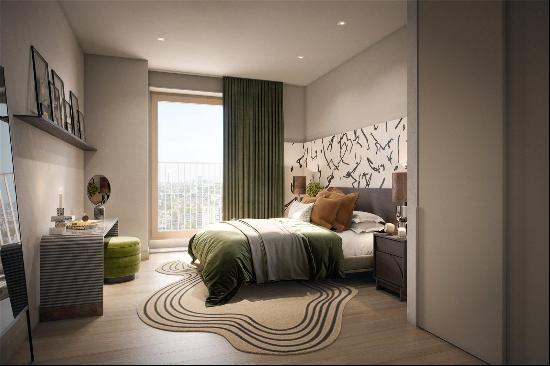
By Imogen Lepere
Durford Edge has what current owner Peter Robinson describes as an “unconventional garden gnome” — a Harrier II jump jet.
“I was obsessed with Thunderbirds as a boy,” says the mathematician, who has lived at the six-bedroom home near Petersfield in Hampshire, southern England, with his family since 2013. “I love the contrast between the plane’s sleek body and the lushness of Gertrude Jekyll’s [garden] design.”
Designed in 1923 by lauded architect Inigo Triggs, the Arts and Crafts property — part of the Durford Wood Estate — comes with 10 acres of grounds including woods and a garden by the celebrated designer Jekyll.
The decommissioned jet in front of the house is one of only eight RAF British Harriers thought to exist in the UK, according to the selling agent. Although not currently included in the £3.95mn asking price for the property, Robinson says he might be tempted to part with it for the right buyer.

Aside from Triggs' Arts & Crafts design, it is Jekyll’s garden that makes the property exceptional. The British doyenne of garden design created or gave advice on more than 400 gardens throughout her career and her ideas continue to echo throughout English cottage gardens. Her calling cards included a naturalistic planting style that was in stark contrast to the more formal approach of the Victorian era, and soft lines in terms of planting as well as layout of paths.
These ideas can be seen in her delicate drawings of Durford Edge, now in the Online Archive of California, and the garden itself, a century on from when it was first planted: curvaceous paths loop around oak trees; a rainbow of azaleas greets guests from the drive; and a series of planted “rooms” create a sense of privacy as well as unexpected vistas, including a 500m descent that draws the eye to the South Downs.
The property is located within commuting distance of London. The current owners extended and modernised the house during a six-year renovation project from 2017. Materials including handmade roof tiles and the cast iron guttering were reclaimed from period buildings across the UK.

The solid oak front door once opened on to a corridor that ran the length of the house to the reception rooms at the back. Now, it leads to an airy entrance hall with a glass door on to the dining room and a pond beyond, glimpsed through French doors. “As soon as you enter the house, light streams straight through its heart,” says Robinson.
Maximising light while preserving original features was a key focus of the renovation. The first floor’s sturdy oak beams were painted silver, while all 167 windows in the house were double glazed. A solid oak staircase with a feature window leads up to six bedrooms including a spacious master suite.
While the works were under way, Robinson and his family lived in The Hollow, a detached property beside the pond with four bedrooms, an open-plan kitchen and raised dining area. This self-contained annexe is included in the asking price.
“I’ll really miss being able to wake up and walk through the woods,” Robinson says, explaining that only one other property is visible from anywhere on the grounds. “However, the house was always meant for a family and our children are leaving home.”
He adds: “When I look at the stone on the home’s elevations, I think of the men who cut it by hand 100 years ago. I hope the new owner appreciates the craftsmanship that has gone into it and feels as privileged as I do to have looked after it for a time.”
Photography: From The Air Property/Savills; courtesy of UC Berkeley, Environmental Design Archives





















